
The Vibrant Vibe of Hlaing, Yangon
Discover the vibrant blend of tradition and modernity in Hlaing, Yangon, where bustling markets, historic pagodas, and modern amenities create an unforgettable experience.
Hlaing is a delightful blend of tradition and modernity, located in the bustling city of Yangon, Myanmar. This neighborhood offers a unique glimpse into the daily life of the Burmese people, filled with a variety of experiences that cater to both culture enthusiasts and casual travelers. Start your journey by exploring the local markets, where you can find everything from fresh produce to handmade crafts. The vibrant colors and lively atmosphere make it a great place to immerse yourself in the local culture. Don’t miss the opportunity to try some traditional Burmese street food – the savory flavors and aromatic spices are sure to delight your taste buds. For those interested in history and architecture, Hlaing is home to several beautiful pagodas and temples. The Kyauk Taw Gyi Pagoda is a must-visit, known for its stunning architecture and serene ambiance. As you walk through the neighborhood, you'll also notice charming colonial-era buildings that tell the story of Yangon’s rich past. Hlaing is not just about history and culture; it’s also a hub for modern amenities. With a variety of cafes, restaurants, and bars, you can enjoy a mix of international and local cuisine. The neighborhood is also home to several parks and green spaces, perfect for a relaxing stroll or a picnic. Whether you’re a history buff, a foodie, or just looking to relax, Hlaing offers a diverse range of activities and experiences that will make your visit to Yangon unforgettable.
Local tips in Hlaing
- Visit the Kyauk Taw Gyi Pagoda early in the morning to avoid crowds and enjoy a peaceful experience.
- Try local street food at the markets for an authentic taste of Burmese cuisine.
- Carry cash as many local vendors and smaller establishments do not accept credit cards.
- Wear comfortable shoes as you will be doing a lot of walking to explore the neighborhood.
- Respect local customs and traditions when visiting religious sites; dress modestly and remove your shoes before entering.
Iconic landmarks you can’t miss
Sule Pagoda
Discover the spiritual heart of Yangon at Sule Pagoda, a stunning Buddhist temple rich in culture and history.

Chaukhtatgyi Buddha Temple
Explore the iconic Chaukhtatgyi Buddha Temple in Yangon, home to a majestic reclining Buddha and a serene atmosphere rich in culture and spirituality.

Maha Bandula Park
Explore the lush greenery and cultural richness of Maha Bandula Park, a serene retreat in the heart of Yangon, perfect for relaxation and local experiences.

National Races Village
Discover the vibrant cultures and traditions of Myanmar at the National Races Village, an ethnographic museum in Yangon showcasing diverse ethnic heritage.
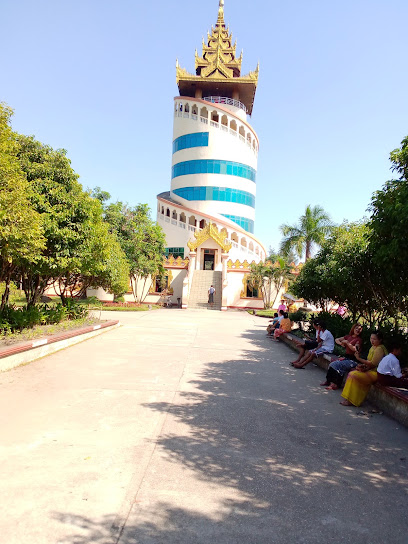
Kyaik Ka San Pagoda
Explore the serene beauty and rich traditions of Kyaik Ka San Pagoda, a must-visit Buddhist temple in the heart of Yangon.

Inya Lake Park (West Bank)
Discover tranquility at Inya Lake Park, an urban oasis in Yangon where nature meets history amidst stunning lake views.

Swe Taw Myat Pagoda
Discover the stunning beauty and spiritual tranquility of Swe Taw Myat Pagoda, a must-visit Buddhist temple in Yangon, Myanmar.

Tomb of Bahadur Shah Zafar
Discover the Tomb of Bahadur Shah Zafar, a serene cemetery in Yangon that reflects the poignant history of the last Mughal emperor amidst lush surroundings.

Kyaik Waing Pagoda
Discover the serene beauty and spiritual essence of Kyaik Waing Pagoda in Yangon, a must-visit destination for every traveler in Myanmar.
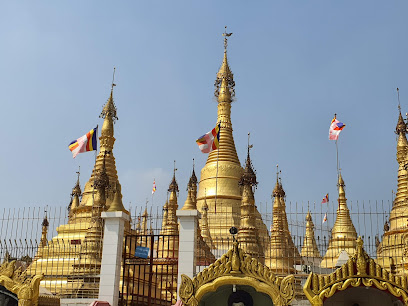
Yangon Heritage Trust
Discover the architectural splendor and cultural significance of Yangon at the Yangon Heritage Trust, a cornerstone for heritage preservation in Myanmar.

Unmissable attractions to see
ပြည်သူ့ဥယျာဉ်
Discover tranquility in the heart of Yangon, where lush landscapes meet cultural richness near the iconic Shwedagon Pagoda.

Thakhin Mya Park
Discover the serene Thakhin Mya Park in Yangon, a lush retreat offering tranquil gardens, vibrant flora, and peaceful pathways for relaxation and leisure.

General Aung San Park
Experience the serene beauty and cultural richness of General Aung San Park, an urban oasis in the heart of Yangon, perfect for relaxation and exploration.

Maha Bandula Park
Experience the tranquil beauty and cultural richness of Maha Bandula Park, a serene oasis in the heart of Yangon perfect for relaxation and exploration.

Karaweik Garden
Explore the serene beauty of Karaweik Garden in Yangon, where lush landscapes meet rich Burmese culture and stunning architectural marvels.

View Point
Experience stunning panoramic views of Yangon at the View Point, a premier destination for breathtaking cityscapes and vibrant sunsets.

Essential places to dine
Aung Thu Kha Traditional Myanmar Food House
Experience authentic Burmese cuisine at Aung Thu Kha Traditional Myanmar Food House, where every dish tells a story.

Le Planteur Restaurants & Lounge
Experience exquisite French cuisine at Le Planteur, Yangon’s premier fine dining destination amidst lush surroundings.
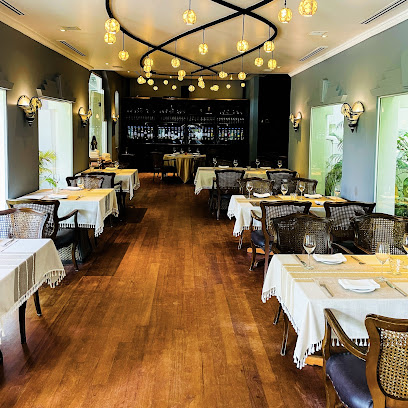
SEEDS Restaurant & Lounge
Experience exquisite European cuisine at SEEDS Restaurant & Lounge in Yangon, where fine dining meets exceptional service.
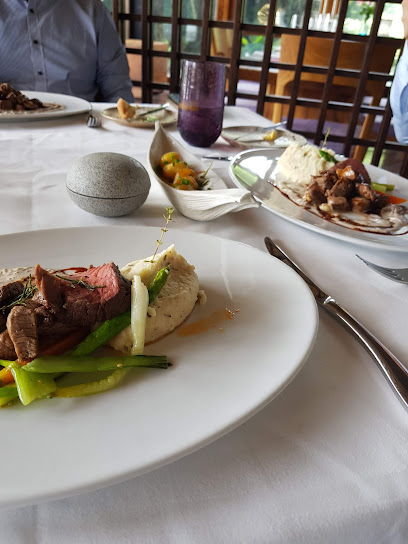
Win Restaurant
Discover authentic Burmese barbecue at Win Restaurant in Yangon—where every dish tells a story of flavor and tradition.
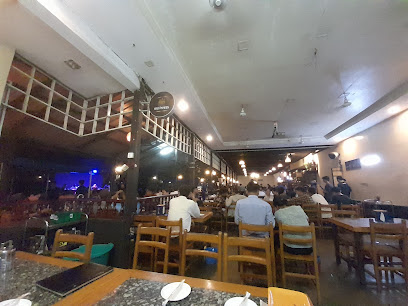
Shwe Li Hlaing BBQ
Savor authentic Myanmar barbecue at Shwe Li Hlaing BBQ in Yangon – a must-visit for food enthusiasts seeking flavorful grilled delights.

Shwe Sa Bwe
Experience culinary artistry at Shwe Sa Bwe in Yangon – where traditional flavors meet modern fusion cuisine.

Hlaing Café
Discover authentic Burmese flavors at Hlaing Café in scenic Pyin Oo Lwin – where every dish tells a story.

Hlaing cafe
Discover authentic Myanmar cuisine at Hlaing Cafe in Chanmyathazi—a must-visit destination for food enthusiasts seeking traditional flavors.

Hlaing
Experience authentic Burmese cuisine at Hlaing in Mandalay - a hidden gem with delightful flavors and warm hospitality.
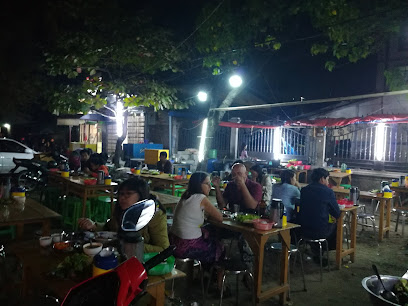
Hlaing Restaurant
Discover the heart of Burmese cuisine at Hlaing Restaurant in Mandalay - where tradition meets flavor in every dish.

Markets, malls and hidden boutiques
UNiQUE IT, Mobile & Electronic Center (YGN-4 Hlaing Branch)
Explore UNiQUE IT in Yangon for top-notch mobile devices and expert electronic repairs, a tech haven for every traveler.
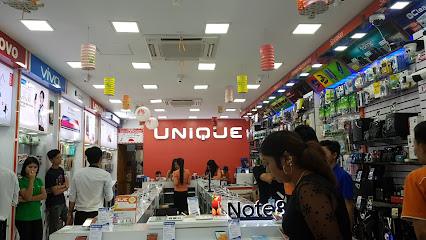
HLA DAY
Discover the artistic heart of Yangon at HLA DAY, where local handicrafts meet modern design in a vibrant cultural setting.

Yangoods Shan Gone Boutique
Explore the unique artistry of Yangoods Shan Gone Boutique, a treasure trove of fashion accessories and gifts reflecting Myanmar's rich culture.

Myanhouse Local Made ( Myanmar May )
Discover unique handcrafted souvenirs at Myanhouse Local Made in Yangon, where local artisans bring Myanmar's culture to life.

Yangoods Myanmar Plaza Branch
Explore Yangoods Myanmar Plaza for unique gifts and fashion accessories, reflecting the vibrant artistry of Myanmar's local artisans.

Unique Mart
Explore the heart of Yangon at Unique Mart, your ultimate convenience store for local snacks and everyday essentials.

Clothing Store
Explore Yangon’s vibrant fashion scene at this charming women's clothing store offering trendy apparel and unique local designs.

Apple Store
Discover unique fashion accessories and gifts at the Apple Store in Yangon, where modern style meets traditional craftsmanship.

လွင်လျှပ်စစ်-ကုန်မာ-ရေပိုက်အမျိုးအမျိုးရောင်းဝယ်ရေး
Explore the vibrant marketplace in Yangon, a hub of electrical supplies and plumbing goods reflecting the heart of local culture.

rrc
Explore Yangon’s vibrant culture through its unique gift shop, offering authentic handicrafts and unforgettable souvenirs from Myanmar.

BZay
Explore BZay in Yangon for unique gifts and souvenirs that showcase Myanmar's rich culture and artistry.

Flannel Unique
Discover unique fashion and local craftsmanship at Flannel Unique, a must-visit clothing store in Yangon, Myanmar.

ZOY
Experience the charm of local shopping at ZOY, where unique finds meet exceptional service in a vibrant atmosphere.

Shop Near My Home
Explore Yangon’s unique wholesaler of household appliances, offering diverse products at competitive prices and a taste of local life.

San Store
Shop at San Store in Yangon for an eclectic mix of trendy footwear that combines local craftsmanship with contemporary styles.

Essential bars & hidden hideouts
Harry's Bar
Experience the vibrant nightlife at Harry's Bar in Yangon, where delicious food and refreshing drinks meet a lively atmosphere.

The Beer Factory Yangon
Experience the vibrant craft beer culture of Yangon at The Beer Factory, where local flavors and great company await.

Atlas Rooftop Bar & Lounge
Experience luxury and breathtaking views at Atlas Rooftop Bar & Lounge in Yangon, where exquisite cocktails meet stunning cityscapes.
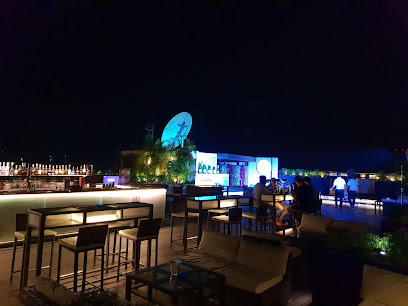
7th Joint Bar & Grill
Experience the vibrant nightlife of Yangon at 7th Joint Bar & Grill, where local music and drinks create unforgettable memories.

TIPSY
Discover the vibrant nightlife at Tipsy, a top bar in Yangon offering exquisite drinks, lively ambiance, and a taste of local culture.

Bar Industry
Experience the vibrant nightlife at Bar Industry in Yangon, where great drinks, delicious food, and lively entertainment come together.

The Glass Yangon
Discover a vibrant dining experience at The Glass Yangon, where grilled flavors come alive in a lively and welcoming atmosphere.

Kanote Rooftop Bar & Restaurant - ကနုတ် (Hlaing Branch)
Experience the flavors of Myanmar with stunning city views at Kanote Rooftop Bar & Restaurant in Yangon.
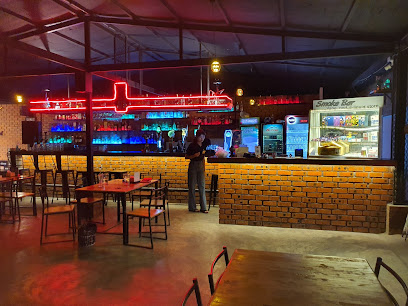
After 8
Discover After 8, a chic cocktail bar in Yangon, where expertly crafted drinks and a vibrant atmosphere await you.

First Bar
Discover the vibrant flavors of Yangon at First Bar, a premier grill destination combining local ingredients with a lively atmosphere.

Local Phrases
-
- Helloမင်္ဂလာပါ
[mingalarpar] - Goodbyeနောက်ဆန်းပါ
[nawhkhsanpar] - Yesဟုတ်ကဲ့
[hutgai] - Noမဟုတ်ဘူး
[mahuthbu] - Please/You're welcomeကျေးဇူးပါနှင့်
[chayzupanhn] - Thank youကျေးဇူးပါနှင့်
[chayzupanhn] - Excuse me/Sorryတောင်းဆိုင်းပါ
[taungsaungpar] - How are you?ဘာလဲ့
[bala] - Fine. And you?ကိုယ့်အကြွေး
[koyeakywe] - Do you speak English?အဂၤလိပ်ပြည့်နဲ့သွားဖြစ်သလဲ
[egalepprenethwaphetsalae] - I don't understandကိုယ့်စိုင်းလို့
[koyisuonglo]
- Helloမင်္ဂလာပါ
-
- I'd like to see the menu, pleaseမီနူးကလစာကြည့်ပါ
[minuchalakyarhin] - I don't eat meatဂရက်အသက်ကိုမဖြစ်ပါ
[gatatsakkomahpet] - Cheers!အောက်ရောက်
[auryauk] - I would like to pay, pleaseငွေကြပါပြည့်ပါ
[wekyaipyarhin]
- I'd like to see the menu, pleaseမီနူးကလစာကြည့်ပါ
-
- Help!ကူးပါ
[ku par] - Go away!မဖြစ်ပါ
[ma phet par] - Call the Police!ရဲရပ်လီစက်ရိုက်
[yeyapalitsekyoke] - Call a doctor!အဆက်လက်လင်း
[ahkalaklang] - I'm lostကိုယ့်မှာရပ်ပါပြည့်ပါ
[ko yema rahparhin] - I'm illကိုယ့်ပြတ်လုပ်ပါပြည့်ပါ
[ko yepattluparhin]
- Help!ကူးပါ
-
- I'd like to buy...ဝယ်ကြပါပြည့်ပါ
[wepyarhin] - I'm just lookingကြည့်ရှိပါပြည့်ပါ
[kyarhshyepyarhin] - How much is it?အစုံအလိုက်ဆုံးမှာ
[asunalokhsomha] - That's too expensiveအလှိုင်းဆုံးသွားပါ
[alhainghsompha] - Can you lower the price?စစ်ဆောက်ပါသလဲ
[sosaukpaethalae]
- I'd like to buy...ဝယ်ကြပါပြည့်ပါ
-
- What time is it?ဘာနေ့မှာသမ္မတပါသလဲ
[banemahtamatahsalae] - It's one o'clockတစ်ရက်လည်း
[tachatlok] - Half past (10)ဆယ်တယ်တွင်
[shetaitwan] - Morningနန်းမန်
[nanman] - Afternoonနောက်ညန်
[nawkyann] - Eveningညန်
[nyann] - Yesterdayမနေ့မှာ
[manemahma] - Todayယနေ့
[yanemah] - Tomorrowမနက်ကန်
[mankankan] - 1တစ်
[tach] - 2နှစ်
[noch] - 3သုံး
[sum] - 4လေး
[lay] - 5ငါး
[nga] - 6ခြောက်
[kreok] - 7ခုန်
[kun] - 8ရှောက်
[hraok] - 9ကိုး
[koe] - 10ဆယ်
[shet]
- What time is it?ဘာနေ့မှာသမ္မတပါသလဲ
-
- Where's a/the...?အဘယ်ကိုလား
[abhekola] - What's the address?လိပ်စာဘယ်
[lipsabhe] - Can you show me (on the map)?မြောက်ကိုသွင်ပါသလဲ
[myaukkolaungpha] - When's the next (bus)?နောက်မှာဘယ်နော်
[nawhmanabhenaw] - A ticket (to ....)လက်ဆောင်ခံ
[lakhsaungkhan]
- Where's a/the...?အဘယ်ကိုလား
History of Hlaing
-
Hlaing, like much of Yangon, has deep historical roots that trace back to the early kingdoms of Myanmar. The area was originally inhabited by various ethnic groups and was influenced by the Pagan Kingdom, which was established in the 9th century. During this time, Hlaing served as a crossroads for trade and cultural exchange, contributing to the development of the region's diverse heritage.
-
In the 19th century, with the British colonization of Burma, Hlaing began to develop as part of the expanding urban landscape of Yangon. The British introduced significant infrastructure projects, including roads and railways, which facilitated trade and migration. Hlaing became a residential area for many British officials and immigrants, leading to a blend of cultures and the establishment of colonial architecture that can still be seen today.
-
During World War II, Hlaing, like much of Yangon, experienced considerable upheaval. The area was bombed extensively, and many buildings were damaged or destroyed. After the war, Hlaing became a site for rebuilding efforts, with a focus on restoring and modernizing infrastructure. This period saw an influx of returning residents and new migrants, leading to a more diverse population.
-
In the latter half of the 20th century, Hlaing emerged as an educational hub in Yangon. The establishment of several prominent schools and universities attracted students from across the country. This focus on education fostered a culture of learning and intellectual engagement, with Hlaing becoming known for its vibrant community activities, including cultural festivals and literary gatherings.
-
In recent years, Hlaing has undergone significant transformation as urbanization has intensified in Yangon. The neighborhood has seen rapid development, with new housing complexes and commercial centers emerging. However, this growth has also brought challenges, including issues related to infrastructure, traffic congestion, and the preservation of historical sites. Despite these challenges, Hlaing remains a vibrant neighborhood that reflects the dynamic nature of Yangon and the resilience of its community.
Hlaing Essentials
-
Hlaing is accessible from various neighborhoods in Yangon. The easiest way to reach Hlaing is by taxi or ride-hailing services like Grab, which are widely used in the city. Public buses also operate routes to Hlaing from downtown Yangon. For those arriving via the Yangon Circular Train, you can disembark at Hlaing Station, which connects the neighborhood to the city's rail network. The journey from downtown to Hlaing typically takes around 30-45 minutes, depending on traffic conditions.
-
Hlaing is best navigated by local transportation options. Taxis and ride-hailing services are readily available and are the most convenient way to explore the area. Public buses are also an option, connecting Hlaing to other parts of Yangon. Bicycles can be rented from local shops, providing a unique way to experience the neighborhood at a leisurely pace. Walking is another option, especially in quieter residential areas.
-
Hlaing is generally safe for tourists, but standard precautions should be taken. Avoid walking alone at night in poorly lit areas, particularly around the outskirts of the neighborhood. While violent crime is rare, petty theft can occur; keep an eye on your belongings in crowded spaces. Areas near the bus stations can sometimes be bustling and warrant caution. Always stay aware of your surroundings.
-
In an emergency, dial the local emergency number 199 for police assistance or 192 for ambulance services. It is advisable to have travel insurance that covers medical emergencies. Local hospitals and clinics are available in Hlaing, but for serious medical issues, you may need to travel to larger hospitals in central Yangon. Keep a list of local emergency contacts handy.
-
Fashion: Do dress modestly, especially when visiting temples or local homes. Avoid shorts and sleeveless tops. Religion: Do respect local customs; remove shoes before entering religious sites. Public Transport: Do be courteous and offer your seat to the elderly or disabled. Don't eat or drink on public transport. Greetings: Do greet locals with a slight bow and a smile; a handshake is also appropriate. Eating & Drinking: Do try local street food, but ensure it is from a clean stall. Don't refuse food offerings, as it can be seen as impolite.
-
To experience Hlaing like a local, visit the neighborhood markets for fresh produce and unique finds. Engaging with local vendors can provide insights into daily life. Consider attending a local festival if your visit coincides with one; these events can offer a rich cultural experience. Take time to explore the smaller streets to discover hidden cafes and shops frequented by residents.
Nearby Cities to Hlaing
-
Things To Do in Kyaiktiyo
-
Things To Do in Hpa-An
-
Things To Do in Pyay
-
Things To Do in Ngapali
-
Things To Do in Mae Hong Son
-
Things To Do in Naypyidaw
-
Things To Do in Pai
-
Things To Do in Chiang Mai
-
Things To Do in Sukhothai
-
Things To Do in Kalaw
-
Things To Do in Inle Lake
-
Things To Do in Kanchanaburi
-
Things To Do in Bagan
-
Things To Do in Sittwe
-
Things To Do in Mrauk U



